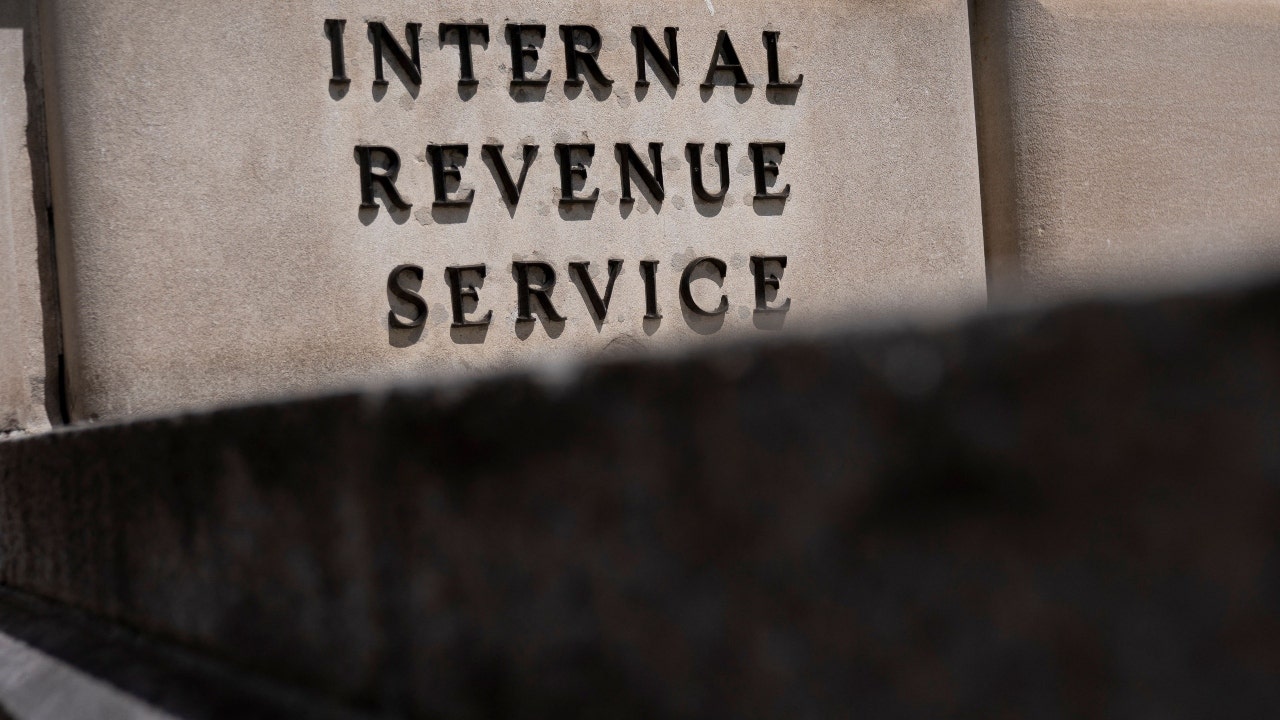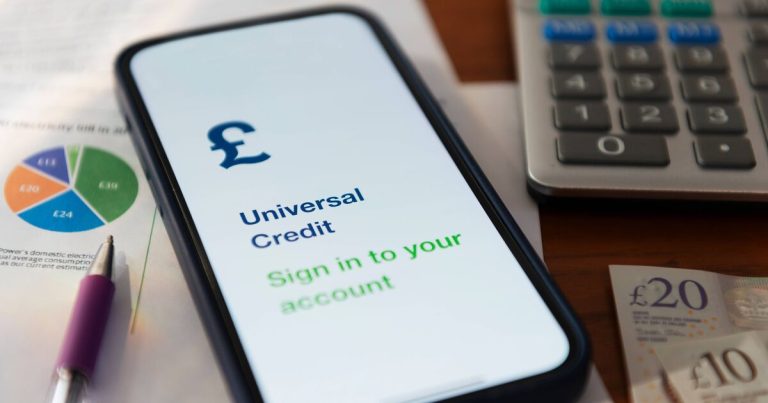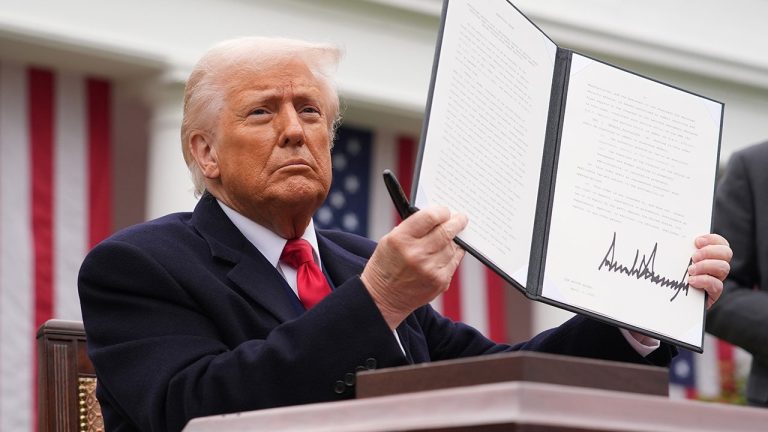
Piper Sandler head of U.S. policy research Andy Laperriere provides his Q3 GDP and PCE outlooks and explains how government spending may impact the economy.
Americans who owe back taxes will be given an incentive to pay up after the Internal Revenue Service said Tuesday it would waive nearly $1 billion in late-payment penalties.
Roughly 4.6 million individual taxpayers who owe for tax years 2020 and 2021 will be eligible for the penalty relief. The IRS is extending the olive branch because it stopped sending out many collection letters during the pandemic. It hoped the letter halt would help struggling taxpayers and reduce its backlog.
The long absence of these computer-generated letters had big consequences for taxpayers. Americans’ debt on unpaid back taxes had been growing with interest and penalties, and many were likely in the dark about just how much they owed.

Internal Revenue Service Commissioner Daniel Werfel testifies during the Senate Finance Committee hearing on Wednesday, April 19, 2023. ((Tom Williams/CQ-Roll Call, Inc via Getty Images) / Getty Images)
“We have been concerned about taxpayers who haven’t heard from us in a while suddenly getting a larger tax bill,” said IRS Commissioner Danny Werfel.
HIGHER CONTRIBUTION LIMITS ARE COMING FOR 401(K)S AND IRAS NEXT YEAR
The move is unprecedented, tax preparers said.
“This is a gift,” said Jim Buttonow, a CPA in Summerfield, N.C. who worked in IRS compliance for nearly two decades. The fact that you didn’t get a notice wouldn’t be reasonable cause to get penalty relief normally, he said.
The penalty relief applies to taxpayers who owe under $100,000 in taxes for 2020 or 2021 who received an initial balance due notice on or before Dec. 7, 2023. The relief expires for debts not paid by April 1, 2024.
Eligible taxpayers will receive a special notice in early January reflecting their new balances due, the IRS said. Those who already paid these penalties will get a refund or credit on their IRS account as early as this week, Werfel said.
IRS collection notices for the 2022 tax year started showing up in mailboxes again this fall. In January, the agency will resume sending the automated notices to those with tax debts from prior tax years.
Surprise relief
As of year-end 2022, 18.6 million individual taxpayers owed the IRS $316 billion in overdue taxes, up from 16.8 million owing $308 billion in September 2019. One reason for the increase in the number of tax debtors is that many Americans accustomed to getting a tax refund are finding they now have a balance due.
“If the IRS isn’t saying, ‘pay up, or else,’ people forget about it,” said Logan Allec, a certified public accountant in Los Angeles.

The reflection of a pedestrian is seen walking past an Internal Revenue Service (IRS) office building in the East Harlem neighborhood of New York. (Photographer: Timothy Fadek/Bloomberg via Getty Images / Getty Images)
Forgetting a tax debt is a problem for taxpayers because while the letters weren’t going out, interest and penalties on any unpaid balances continued to accrue, Allec said.
The interest grows by law, and cannot be waived by the IRS.
The current interest rate is 8%, compounded daily. The penalty for failure to pay is 0.5% of the unpaid balance each month or 6% a year, up to a maximum of 25%. For taxpayers who enter into an IRS payment plan, the penalty gets reduced to 0.25% a month or 3% a year.
Even then you are still paying about 11% on an annual basis, said E. Martin Davidoff, a certified public accountant and tax lawyer in Cranbury, N.J.
While the automatic notices were paused, IRS enforcement didn’t stop, but it slowed. The agency is still sending notices of federal tax liens in limited cases and passport revocation letters for taxpayers who owe more than $59,000, the 2023 threshold. Revenue officers are working cases, including giving priority to high-income, high-wealth collection cases, targeting taxpayers with more than $250,000 in debt, the IRS said.
SUPREME COURT HEARS A CASE THAT HOLDS SWEEPING RAMIFICATIONS FOR THE US TAX CODE
The IRS continued to send so-called soft notices that are required by statute. That includes CP14 notices, the first notice taxpayers get if they file a return with a balance due and don’t pay, and annual balance due reminders.
But the more aggressive notices, the CP500 series, and the LT11, the final notice of intent to levy, weren’t going out.
The CP504 notice, for example, gets taxpayers’ attention with its warning in large type “Final Balance Due Reminder—Notice of Intent to Seize (Levy) Your Property or Rights to Property” along with the directive “Amount Due Immediately.”
If you hear from IRS collections, take it seriously, said Davidoff.
Self-help for tax debt relief. If you get one of these notices, you can deal with your tax debt directly with the IRS on your own, or with the help of a professional.
If you choose help, seek out a CPA, enrolled agent, or lawyer who specializes in what is called “tax controversy.”

The Internal Revenue Service (IRS) building in Washington, D.C., on April 17, 2023. ((Photo by STEFANI REYNOLDS/AFP via Getty Images) / Getty Images)
The IRS has beefed up its self-service options. Taxpayers can establish an online account at the IRS website and enter into a short-term extension to pay or a payment plan.
What if you can’t pay all that you owe. Taxpayers facing hardships can set up a partial payment plan with the IRS, or secure an offer in compromise, which allows them to settle tax debts for less than what they owe, said Davidoff. These offers require substantial financial disclosures and can take months for the IRS to consider.
Allec said a recent retiree who owes $20,000 for tax year 2022 will likely qualify to settle his debt for much less than the balance due because he has few assets and limited income in retirement.
Penalty relief for other tax years. Taxpayers who don’t qualify for the latest penalty relief can ask for a waiver. Normally, failure-to-pay penalties can be waived entirely for taxpayers with no late filing or late payment penalties for three years, Davidoff said.
GET FOX BUSINESS ON THE GO BY CLICKING HERE
You can call or write the IRS or send in Form 843 to request this. You can also get penalties waived for reasonable cause, such as a severe medical issue, but that is hard to establish.
The 10-year rule. In most cases, the IRS has 10 years to collect taxes. That means that old tax debts can fall off the books, said Jon Call, an enrolled agent in White Bear Lake, Minn.
But avoiding the debts for a decade isn’t easy. In a couple of cases where Davidoff thought the debt would likely expire, the IRS “woke up” around the 8.5-year mark and asked for updated financials on the taxpayers and then demanded payment.
“If you owe taxes, generally the IRS will get around to collecting it,” he said.





